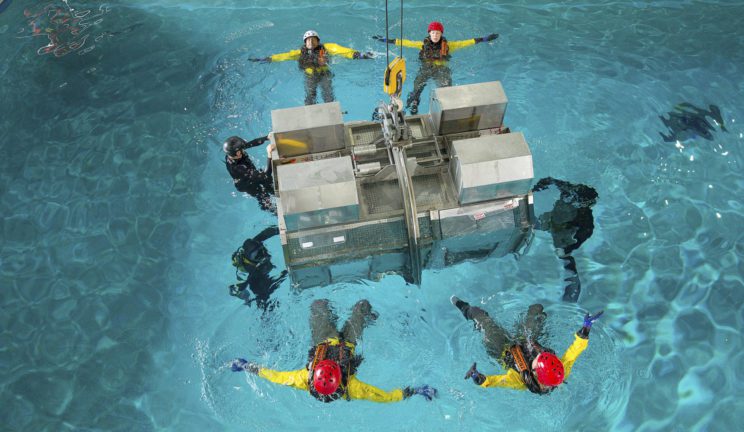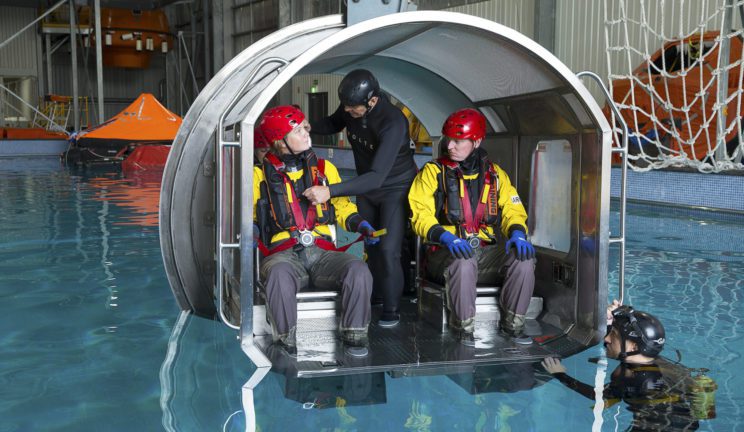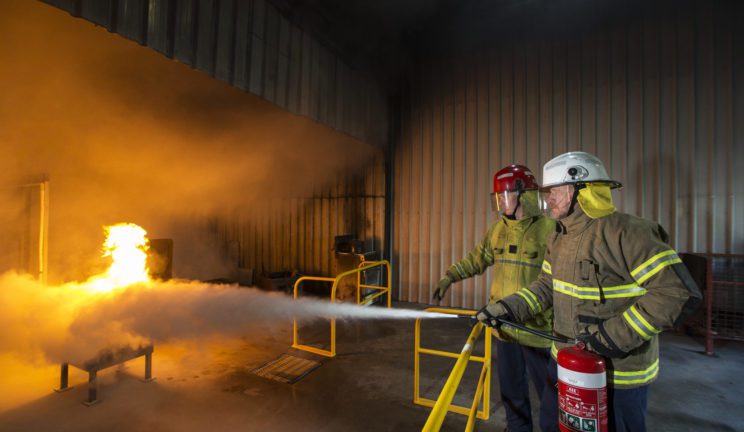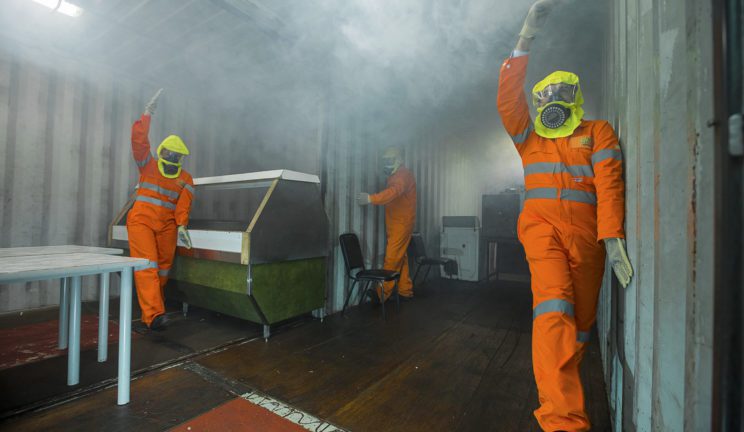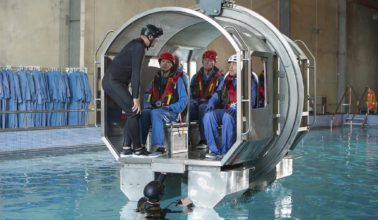OPITO – Further Offshore Emergency Training (FOET) with Compressed Air Emergency Breathing System (CA-EBS) 5850 Perth · Melbourne · Darwin
Maintain your OPITO Certification | Practice CA EBS Use Underwater
ERGT Australia’s OPITO Further Offshore Emergency Training (FOET) with Compressed Air Emergency Breathing System (CA-EBS) covers helicopter safety and escape, fire fighting, self rescue and emergency first aid. It also addresses the fundamental differences between re-breather and compressed air systems, the rationale and hazards associated with CA-EBS use and the actions to be taken when conducting pre-flight inspections, donning the lifejacket correctly, buddy checks and emergency deployment in water.
This programme is designed to meet the further offshore safety and emergency response training requirements for personnel working in the offshore oil and gas industry who will be supplied with a CA-EBS during offshore helicopter travel.
Learning Objectives
The objectives of the FOET with CA-EBS training are the ability of delegates to:
- Demonstrate the use of safety equipment (in water) – aviation lifejacket, transit suit and compressed air emergency breathing system (CA-EBS).
- Demonstrate, in a simulated environment, that they can use the safety equipment and follow procedures in preparing for and during helicopter emergencies – with particular focus on escaping from a helicopter following ditching.
- Demonstrate that they can use basic fire fighting equipment effectively, and use self-rescue techniques in low visibility and completely obscured visibility situations e.g. smoke-filled areas.
- Demonstrate that they can perform basic first aid.
For more information on the OPITO unit outcomes please click here
Training Standard Pre-Requisites
A valid (in-date) OPITO-approved BOSIET (with CA-EBS), BOSIET, TBOSIET, FOET (with CA-EBS), FOET or TFOET certificate or valid non OPITO industry approved equivalent certificate.
Medical and Health Standards
A current offshore or industry equivalent medical is required for this course. Please refer to the ERGT Huet Medical Form located under the Trainee Resources page for accepted medicals and requirements.
Additional Information
There is an increased risk of decompression sickness if you fly at altitude after breathing compressed air underwater. As per the Divers Alert Network (DAN) published Revised Flying After Diving Guidelines for Recreational Diving – May 2002, a minimum pre-flight surface interval of 12 hours is recommended. Trainees should take this into consideration when arranging for travel after course completion and refer to their company Health and Safety department for further advice.
Additional Requirements
Please bring swimwear and a towel for in-water activities. Government-issued photo identification is required for course registration.
Structure and Assessment
This course is delivered through classroom presentations, group discussion and practical exercises, completed in a simulated workplace environment.
Learners are required to demonstrate their competence through completion of practical exercises.
ERGT incorporate the use of Modular Egress Training Simulators (METS®) for HUET.
Skills Maintenance
To maintain this certificate it is an OPITO requirement to revalidate every 4 years (FOET or TFOET).
Did you know that you can refresh your OPITO training up to three (3) months prior to expiry without loss of validity? We recommend factoring course availability, your travel / swing requirements when booking your FOET with CA-EBS (5850). Our team are here to help with any questions.
Authority / Regulator
This training is regulated and endorsed by OPITO, which is the global, not-for-profit, skills body for the energy industry.
†No GST applicable
*Price Includes GST
+Price includes GST / ^No GST applicable

